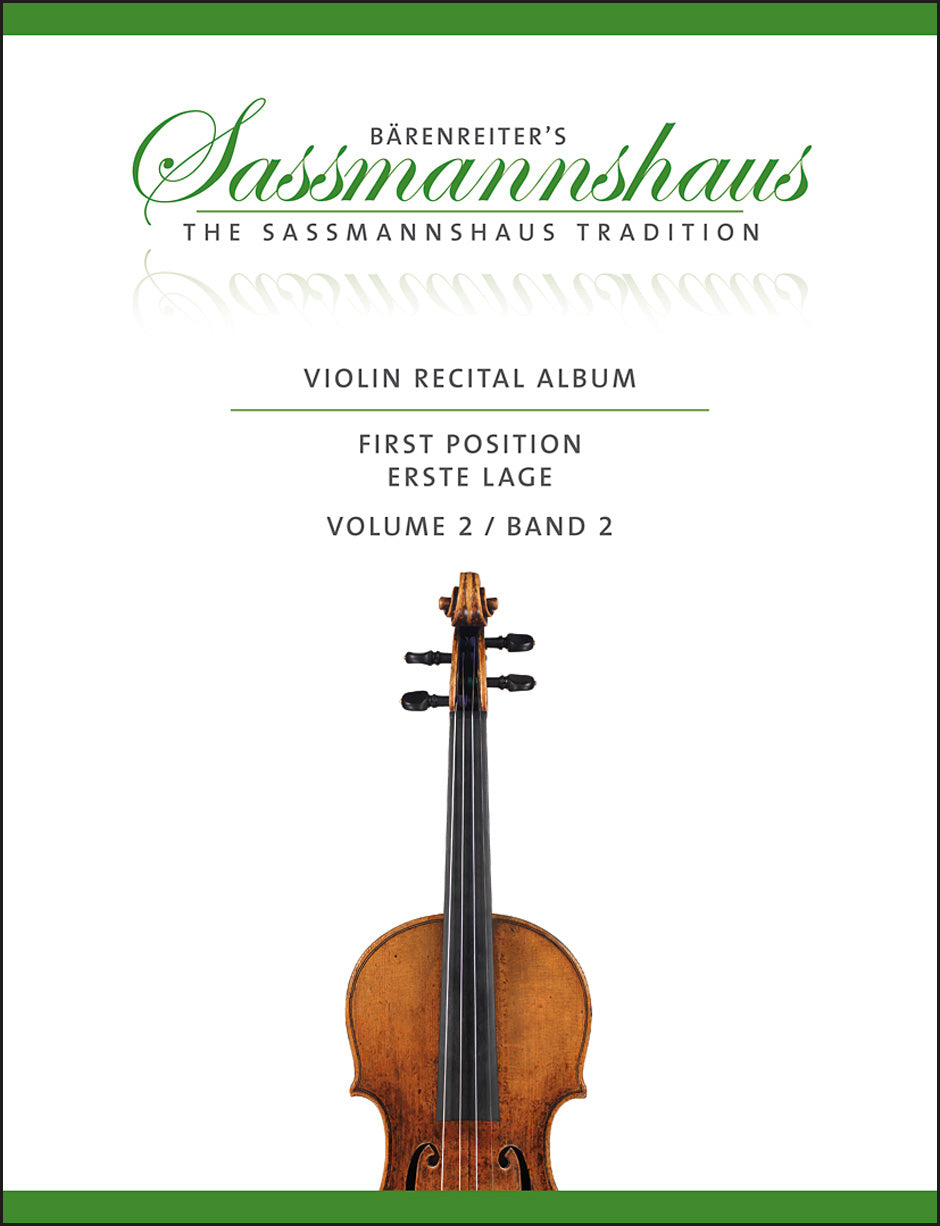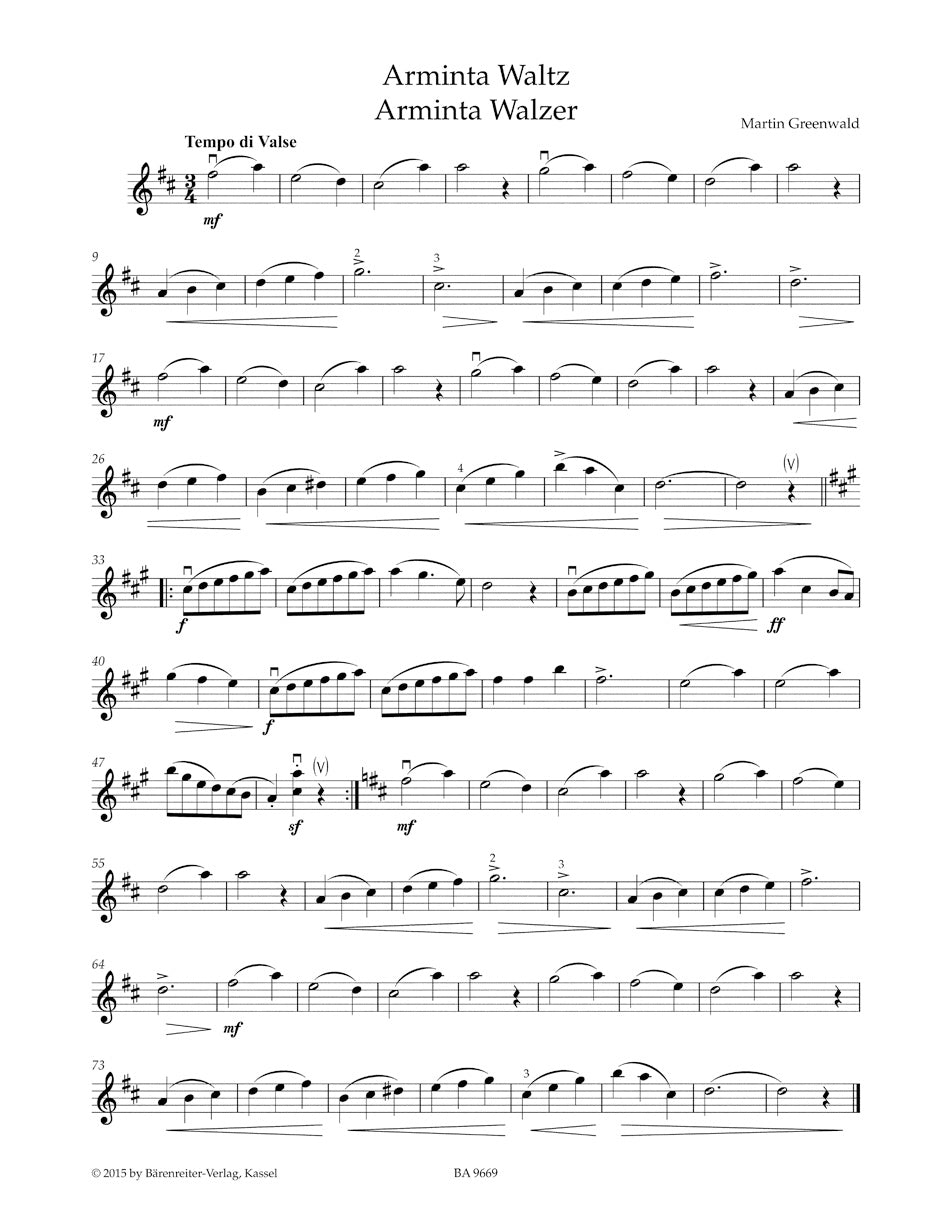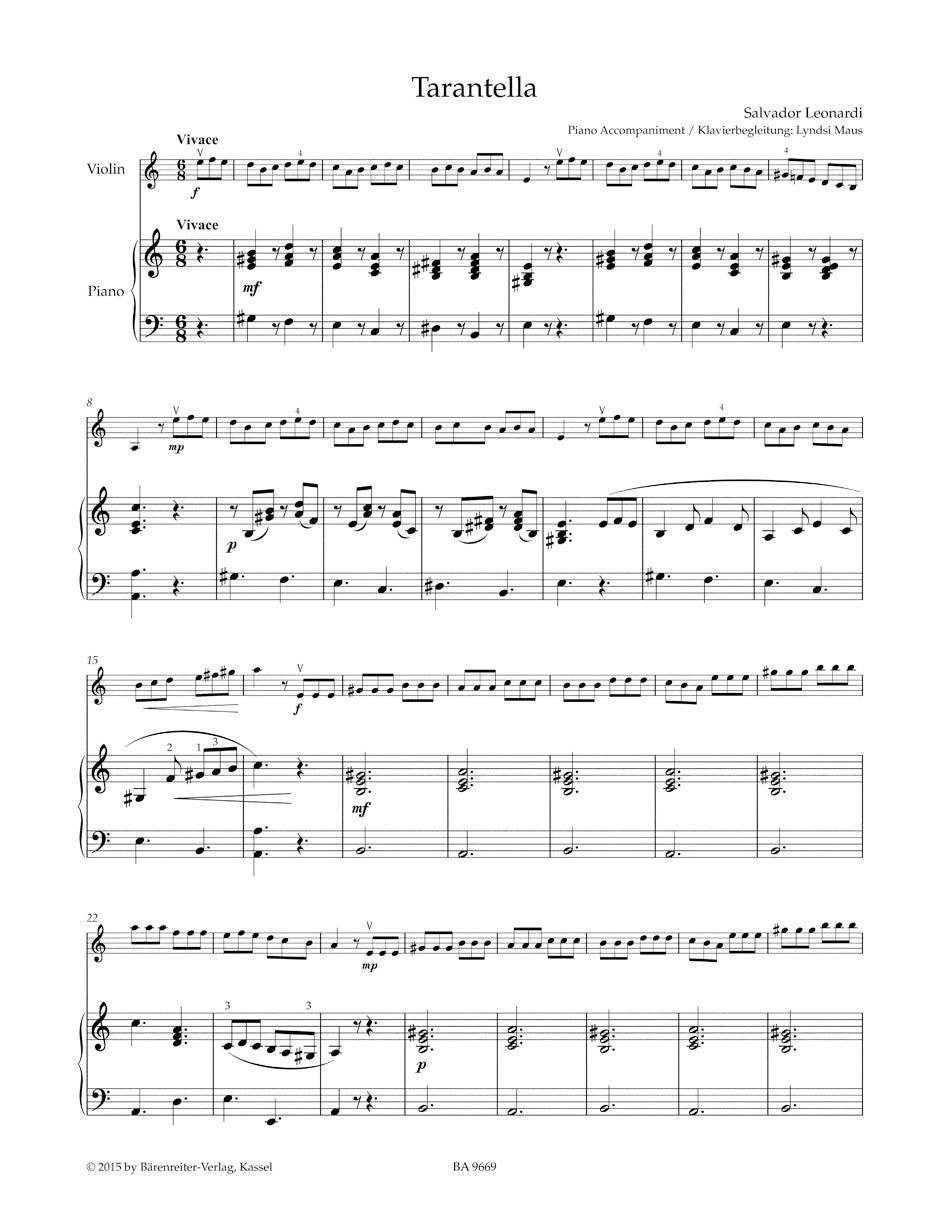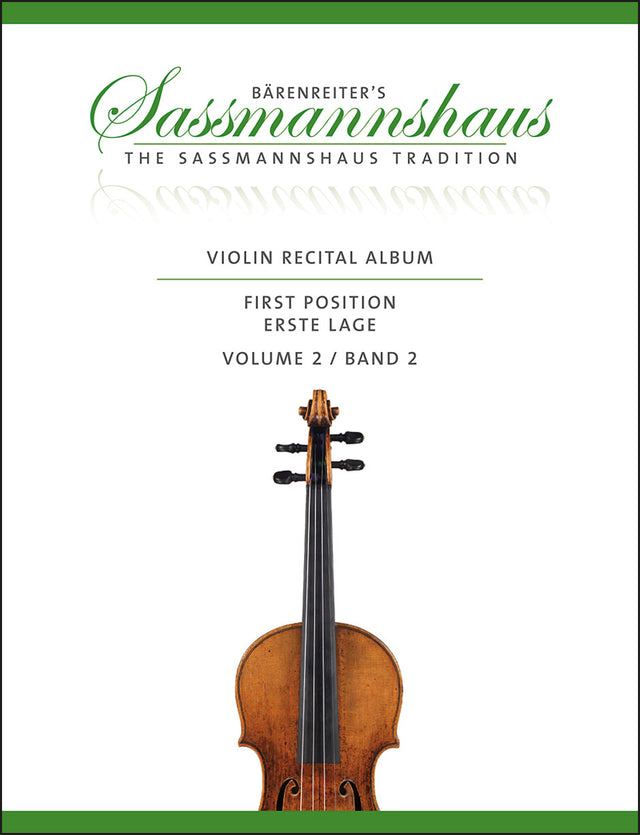Violin Recital Album - First Position - Volume 2
In stock and typically ships within 1 business day.
- Composer: Christoph Sassmannshaus
- Instrumentation: Piano, Violin
- Work: Violin Recital Album
- ISMN:
- Size: 9.1 x 11.8 inches
- Pages: 81
Description
These two collections (BA 9668, BA 9669) give young students and teachers a rich selection of recital pieces, either to complement the Sassmannshaus "Early Start on the Violin" method or to play independently from it. As all the pieces are written entirely in first position, they can be used after just a few months of lessons. The piano part may be played by the teacher or an advanced student. As an alternative, the accompaniment can be played by a second violin. From the contents of Volumes 1 and 2: Nursery rhymes, folksongs but also less well-known gems, as well as original pieces by the editors, all precisely tailored to meet the needs of young students.
Sassmannshaus developed these two editions together with his wife Melissa Lusk and his son Christoph Sassmannshaus. Amy Woodforde-Finden (1860-1919) was born to American parents in Valparaiso, Chile where her father was serving as the US Consul. At the age of 35 she married an English Lieutenant-Colonel Woodford Woodforde-Finden who was serving as a brigadier and surgeon in the Indian Army. Her travels to exotic eastern locations became the impetus for dozens of popular songs. She was adept at blending the sounds of Asia and South Asia with the expectations of an American and English audience. "The Temple Bells" has been transcribed for violin and is included in our Recital Album. It is one of Four Indian Love Lyrics published by Boosey & Co. in 1902. The most famous of these is the Kashmiri Song which has been performed by many artists including Yehudi Mehuhin, Rudolph Valentino and Xavier Cugat. More recently Julian Weber has recorded a transcription for cello.
Publishers use a lot of words to describe what they sell, and we know it can be confusing. We've tried to be as clear as possible to make sure you get exactly what you are looking for. Below are descriptions of the terms that we use to describe the various formats that music often comes in.
Choral Score
A score for vocalists that only contains the vocal lines. The instrumental parts are not there for reference. Generally, cheaper than a vocal score and requires multiple copies for purchase.
Facsimile
Reproductions of the original hand-written scores from the composer.
Full Score
For ensemble music, this indicates that the edition contains all parts on a single system (there are not separate parts for each player). In larger ensembles, this is for the conductor.
Hardcover
Hardbound. Generally either linen-covered or half-leather.
Orchestral Parts
Similar to a wind set, this is a collection of parts. In the case of strings, the numbers listed are the number of copies included, though generally these are available individually (often with minimum quantities required).
Paperback
When publishers offer multiple bindings (e.g. hardcover) or study scores, this is the "standard" version. If you're planning to play the music, this is probably what you want.
Performance / Playing Score
A score of the music containing all parts on one system, intended for players to share. There are not separate parts for each player.
Set of Parts
For ensemble music, this indicates that there are separate individual parts for each player.
Solo Part with Piano Reduction
For solo pieces with orchestra, this is a version that contains a piano reduction of the orchestra parts. For piano pieces, two copies are typically needed for performance.
Study Score
A small (think choral size) copy of the complete score meant for studying, and not playing. They make great add-ons when learning concertos and small chamber works.
Vocal Score
A score prepared for vocalists that includes the piano/organ part or a reduction of the instrumental parts.
Wind Set
For orchestral music, this is a collection of wind and percussion parts. The specific quantities of each instrument are notated.
With Audio
In addition to the printed music, the edition contains recordings of the pieces. This may be an included CD, or access to files on the internet.
With / Without Fingering (Markings)
Some publishers prepare two copies - a pure Urtext edition that includes no fingering (or bowing) suggestions and a lightly edited version that includes a minimal number of editorial markings.





